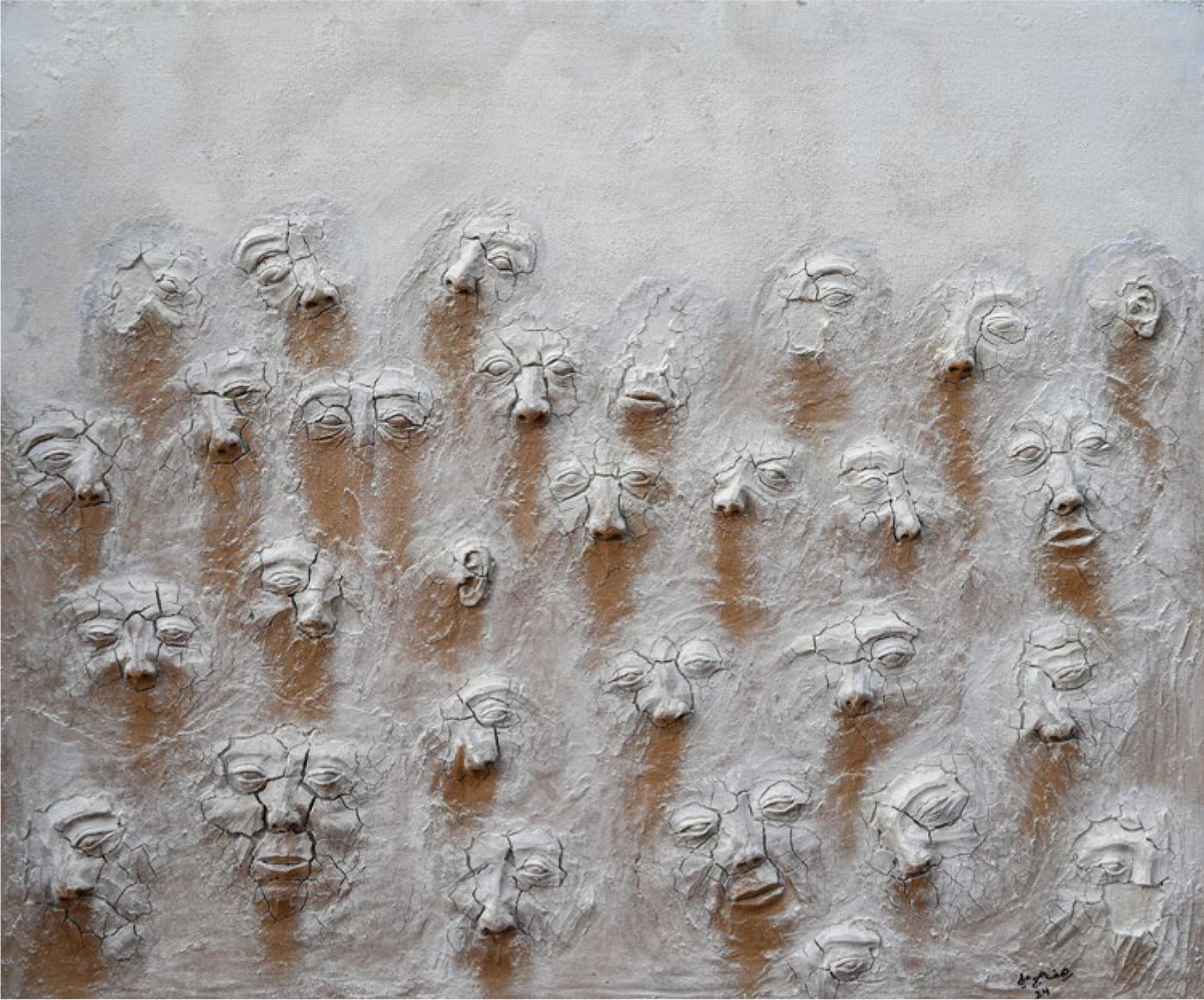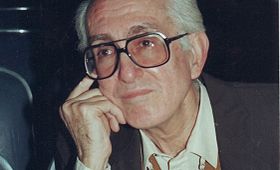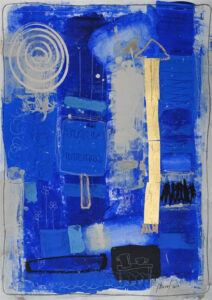And as I poured the water out of the cold glass, an idea struck me… The refrigerator cools meat of any kind to keep it from spoiling. And refrigerated meat of course consists of the flesh of dead or slaughtered animals. Would it one day be possible to use it to preserve a living body? The question opened up new horizons before me…
Sunday, January 21, 1951
If it weren’t for the cup of milk I drank late last night, brought to me by Marzouk on the doctor’s advice, fearing the return of my insomnia; if it hadn’t been for that warm, rich drink, I would have remained seated on the balcony, reading those thrilling lines by the light of the lantern in my room until morning.
And so, when I woke up at 8 am, after about five hours of deep, dreamless sleep, I still felt an overwhelming pull to those two volumes in my room, and doubtless I’d slept cradling them in my arms.
When I left my bed and threw open the doors to my room, feeling a slight headache in my forehead, those words I’d read of Dr. Halim’s record of work remained engraved, word by word, in the back of my head.
Much of the first volume was devoted to the doctor’s perturbed thoughts, the vague and distant desires he entertained about lengthening the span of a human life, and how he began to find a faint glimmer of light after the iceberg had fallen atop of Dr. Jean, Professor Emac’s assistant. And how he had since immersed himself in a whirlwind of research on the anti-atherosclerosis drug… and on animal hibernation.
With regards to the discovery of the drug, his writings were difficult for me to decipher, consisting as they did of symbols and of chemical and mathematical equations of which I understood nothing. In contrast, his reflections on animal hibernation were both clear and interesting, and he described how some animals, such as the polar bear, when faced with the prospect of food shortages in winter, will fall into a deep state of hibernation until the season of hardship comes to an end. During this state, the flame of life is turned down as low as it can go, with the pulse slowing down to a pace of two beats per minute, and the metabolism decreasing to a fifth of its usual rate.
And then, toward the very end of the first volume, an inspired idea slowly begins to dawn on Dr. Halim. On page 407, he writes:
August 2, 1943 – I opened my refrigerator, which works using the usual ice plates, to get some cold water to relieve some of the oppressive heat of this sweltering August night. And as I poured the water out of the cold glass, an idea struck me… The refrigerator cools meat of any kind to keep it from spoiling. And refrigerated meat of course consists of the flesh of dead or slaughtered animals. Would it one day be possible to use it to preserve a living body? The question opened up new horizons before me… The horizons of a bright new world of great hope… But to what extent will I be able to realize these hopes?
And excepting the mention of a few local experiments, which observed the hibernation habits of certain species of Egyptian frogs or snakes, recording their feeding patterns over the course of this period which can last up to five months, the first stage of the doctor’s experiments ends with the end of the first volume, 440 large-format pages in total, written over a span of six years (from March 1941 to March 1947). Despite the late hour, I’d tried to continue reading through into the second volume, but Marzouq and his cup of milk hastened my exhaustion and made it impossible to stay up any longer than I already had.
However, this morning found me my in my best state of mind, ready to learn more about experiments in cryopreservation, that ancient enemy of mankind’s, which, with an ingenious enough idea, might be transformed into a scientific tool that produces a way of extending a human life by perhaps hundreds, or maybe even thousands, of years.
After taking a light breakfast in my room, I quickly began devouring the second volume of the record of Dr. Halim’s works, written by his niece, Zein… I retreated to my corner of the balcony, and my enjoyment of the material increased at the sight of the slanted letters, as though written by delicate musical fingers.
The first pages of this volume recounted some preliminary experiments carried out on different types of plants, cooled in crucibles to a temperature of 14 degrees Celsius below zero. Dr. Halim’s observations had to do with the vegetal fluid, the “protoplasm,” which circulates in every type of plant without exception, and which hardened into small balls when the plant was cooled. However, when the plant was returned to its normal temperature, those balls merged together once again, resuming the same fluid state and its usual course of circulation.
On October 1, 1949, Dr. Halim recorded his first cryonic experiments on animals. He managed to freeze a huge fish, a red porgy, right after catching it in the Red Sea. When he restored the fish to its normal temperature after having kept it frozen for an entire 24 hours, it suddenly came back to life, and within three hours had resumed swimming in its glass tank as though nothing had ever happened. The doctor then, as I read in the subsequent pages, carried out a number of other cryonic experiments on other types of fish, and then on a few amphibious creatures, such as turtles, as well as experiments on different types of salamanders, snakes, and on a desert monitor lizard. He had a 100% success rate, save for two failed experiments, perhaps due to lack of preparation.
On page 128 of the second volume, in December 1949, Dr. Halim put down his first law of the theory of cryopreservation, writing:
The practical experiments I’ve carried out over the last eight years have proven that the rapid cooling of any substance brings its molecules to a locally frozen state, that is, a state of complete stability. Therefore, if we are able to preserve the molecules of a substance permanently, beginning with a temperature of absolute zero, then their arrangement in space remains fixed, unmoving because heatless, as it is scientifically known that there is no movement without heat.
How wonderful, how moving and thrilling to be the first to arrive at a specific something that, until the moment of that arrival, remained obscure and unknown. How delightful, how meaningful when the prospector, the explorer, or the researcher works for long days and long nights and then, arriving at his ultimate goal, in a mere instant forgets the hardships that preceded.
How many explorers held their breaths as they beheld, for the first time, the sweeping vista of a pristine natural landscape around the source of some river, and immediately forgot all the horrors and illnesses to which they were exposed on their journeys? And how many miles have some mountain climbers ascended, through hurricanes and deadly storms, just to catch a single glimpse of the world from atop the barren peaks? And how many archeologists’ eyes were dazzled at the sight of buried treasures discovered inside the cellars and hidden passages left behind by the ancients, after having been almost crushed by the despair of all the effort expended to excavate them?
Thus the researcher, the discoverer, the prospector, the journalist, and the inquisitive person all hidden within me rushed onward willy-nilly, and I rushed with them, panting after every word, every line contained within the covers of that second volume. Once again, how filled with wonders was the world, this world of Dr. Halim’s!
And with the start of the year 1950, the doctor began carrying out his experiments on frogs, cooling them to a temperature between 280 and 520 Celsius below zero, then cooling snails to 120 below. He then conducted experiments where he cooled bacteria, seaweed, some varieties of red algae and some sorts of crabs to a temperature of 110 below. All of these were revived when their temperatures were returned to normal. His cooling experiments went on to include different species, such as some tree spiders, mountain rodents, a species of white Chinese mouse, and a turkey liver freshly excised from between that animal’s ribs. He succeeded in restoring all of these to their former life without any complications.
But the first experiment conducted on a creature more akin to a human was a total failure. He prepared a compact device made of tin and large enough to contain a wild rabbit, and he doubled the wall panels in order to be able to circulate liquid helium in the space between.
When he began cooling the rabbit’s body, he noticed severe convulsions in its limbs, and when he restored it to its normal temperature after a full day of freezing, he found a lifeless corpse in its place.
He conducted the same experiment one, two, three more times on other rabbits, but they all died very quickly, a result of convulsions that affected their limbs as soon as the cooling process had begun. Dr. Halim was left confused, wondering bitterly about the reason behind the failure of his most recent experiments, and this is where he remembered the drug that Professor Emac had been experimenting with to counter atherosclerosis. He not only knew the formula behind its composition but had also made improvements to it.
One day, the doctor injected an appropriate quantity of the drug into the vein of a new rabbit specimen. The experiment was an immediate and resounding success. This time, he was able to return the rabbit to its normal state of life after its body had been in the cryonic device for over a day and a half. Dr. Halim dubbed the new and improved drug “Pink Elixir of Life at Absolute Zero,” or “P. Elixir L.A.Z.” for short. The small cryonic device he called “Halim no. 1.”
With the success of this experiment, luck smiled upon him once again, for after that he found success in cryonic experimentation on wild rabbits, domestic rabbits, a number of dogs and wolves and mice, for longer and longer periods, lasting up to several days. By severing some nerves in the animals’ lower limbs, he was able to preserve them for 6 months at a temperature of 40 below zero. With great joy, on page 206, in April of 1950, Dr. Halim set down his second law on the theory of cryopreservation:
To return the frozen animal to life, it must first be cooled extremely rapidly, so that all of the parts of its body freeze at once, as the arrangements of the body’s molecules must remain stable, so that the natural and chemical reactions of the body continue as they are, before freezing and after. Thus, these molecules may resume their reactions after the body is restored to its natural temperature, and the property of life, or life itself, remains within. And because the body’s chemical reactions halt at a very low temperature, such as 268 Celsius below zero, then any living tissue at that temperature remains stable and will retain all its properties.
But in his writings about his subsequent experiments, the doctor’s anxiety became clear, as though he feared the consequences of continuing to make advancements in that regard. In more than one place, he seemed as though paused and hesitant at the threshold of this new world, breathlessly wondering:
Now that my experiments have proven the ability to freeze a significant number of animals similar to humans for periods of time ranging from two months to several years, and then after that to bring them back to normal life… is it possible then to apply the same theory… to a human being? Is it possible to cryonically preserve a human being for a long period of time without this leading to his death?
The mere idea was bold and dangerous.
Dr. Halim decided to conduct one last experiment before making a final decision on the subject. He would experiment on one of the three chimpanzees he’d purchased from a foreign hobbyist who’d left Egypt a short time ago.
He built a bigger cryonic device to fit the ape, which he called “Halim no. 2.” Just like the first one, it had double-paneled walls and was cooled with liquid helium. Before shutting the ape up inside the device, the doctor injected some of the Pink Elixir into a vein in its left arm.
The experiment failed. The ape perished within 12 minutes of beginning the cooling process. It was a painful shock to Dr. Halim’s ideas, as though he’d suddenly collided with a wall whose properties he was unaware of, a cruel jolt to his hopes just as he found himself on the threshold of final victory.
On page 313 of the second volume, in an entry dated June 1950, Dr. Halim wrote this brief note, his words dripping with sorrow:
The fact has become clear to me now, bright as the sun, a fact that threatens to undo all my dreams and all the sweat I’ve put into this endeavor over the last years… It is that the human body is so large as to be impossible to cool immediately and all at once if placed in a cryonic device similar to “Halim no. 1,” even if larger…. For the cooling process will take some minutes, up to 12, before all the parts can be frozen, which is sufficient enough time for the various forces resultant from different parts of the body being cooled at different rates to damage some of the cells and cause them to explode… Thus, the delicate balance between the body’s molecules and tissues is disturbed and the patient dies as a result of internal bleeding.
On page 354, Dr. Halim’s thoughts become confused, and his feverish words, rendered in his niece’s musical hand with its slanted letters, read:
And now arrives the month of September, without my having reached any conclusive results with regards to my experiments on the apes. For from last June until now, that is, for three months’ time, I’ve been stalled on the same rutted road with no results, without being able to take a single step forward… In fact, I’ve regressed hugely, for the third and final chimpanzee I owned died during the third and last experiment, all of which have brought me nothing of any value.
With my own eyes I saw the iceberg collapse on Dr. Jean, burying him instantly, and when his frozen body was rescued, after over 24 hours in his icy prison, he still had the breath of life in him. All thanks to the dose of P. Elixir L.A.Z. injected into his veins and which guaranteed the immediate cooling of his blood, alongside the freezing of all his body parts, which in turn ensured that his brain cells would continue to be nourished once the involuntary period of hibernation in his frozen bed was over.
This is what happened to the young doctor, and I was one of the few to witness it. And so why has the third chimpanzee died now, despite the fact that I froze her under the same conditions that Jean was frozen under and from which he emerged alive? Could I have made a mistake, even a small one, during my experiments on the apes? Could I have forgotten something minor that led to their deaths? Or is it that the reason for Jean’s emerging alive after having been frozen under the weight of the glacier is something else entirely, something I have not yet managed to see?
And yet I still insist upon the theory at which I have arrived; I cling to every letter of its sound, scientific hypothesis, which is: “Cryopreservation of the human body for long periods of time is not impossible so long as the correct method for freezing it immediately and all at once is identified… And this process must be repeated when the body is returned to its normal temperature, that is, its temperature must be restored immediately and all at once, to all its parts and cells.”
And this is where the second volume ended, after 388 large format pages. Its writing took up the span of four years minus four months, from March 1948 to November 1950.











